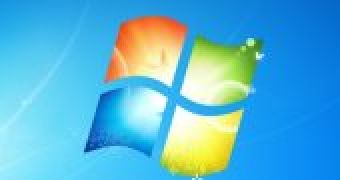As Microsoft’s latest Windows client is evolving toward the first major upgrade, the last pre-release Build of the operating system will expire next week. Come June 1st, 2010, Windows 7 Release Candidate Build 7100 will be completely killed off. Early adopters that followed the development process of Windows Vista’s successor already know that May marked one year since Windows 7 RC was released to the public for testing. Build 7100 ended up taking the number of downloads of pre-release Windows 7 copies to over eight million.
Just a few months ahead of the May 2009 RC milestone, Microsoft had released the Beta of Windows 7. Build 7000 became available for download to testers in January 2009, and although it was initially planned as a limited testing program, Microsoft ended up delivering the bits to all interested in testing Vista’s successor.
There are a total of three stages to the expiration of Windows 7 RC, two of which have already passed. According to Microsoft, “Effective February 15, 2010, the expiration notification process begins: Windows 7 RC users receive an expiration notification in the task bar one time per day. Windows 7 RC users are presented with the Notification Wizard one time every four hours and then one time every hour. Effective March 1, 2010, Windows 7 RC enters the next phase of expiration: Expiration notifications in the task bar continue. Computers that are running Windows 7 RC restart every two hours. When the computer restarts, your work will not be saved.”
The third and final stage of Windows 7 RC’s expiration starts on June 1st. “Effective June 1, 2010, Windows 7 RC expires: Windows starts to a black desktop. Windows 7 RC users are presented with a Windows Activation screen. The screen states that the Windows that you are running is not genuine. Computers that are running Windows 7 RC restart every two hours.”
This is the most important change for Windows 7 RC as well as the fact that Build 7100 of the operating system will begin to be considered as pirated.
Service Pack 1
Windows 7 Build 7601.16556 v.172 is the latest leaked milestone of Service Pack 1. Of course, Microsoft is not confirming any details related to the development of SP1 for Windows 7, at this point in time, let alone, discussing actual Build numbers. The company did indicate that SP1 would be only a minor evolution to Windows 7, with features such as RemoteFX and Dynamic Memory representing the most consistent parts of the upgrade, both reserved for Windows Server 2008 R2. According to third-party sources Windows 7 SP1 Build 6.1.7601.16560.win7sp1_beta.100524-1800 wrapped up this week could be selected to be the official Beta. No word from Microsoft on this, though.
RTM still going strong
But the truth is that Windows 7 doesn’t need SP1 to be ready for adoption, be it by home users or business customers. The level of adoption that the platform has enjoyed so far is testimony to this fact. And remember, Windows 7 is, after all, the fastest selling operating system in history.
According to data from Internet metrics company Net Applications, Windows 7 accounted for a market share of 11.68% at the end of April 2010. Next week, Net Applications will provide statistics for May 2010, and Windows 7 is poised to jump at least 1%, to approximately 13% of the market, a figure that is roughly equivalent to over 130 million sold licenses worldwide. Meanwhile Vista will drop even further from 15.60%, while Windows XP will also continue to lose market share, down from 63.41%. By contrast, Windows Vista only hit the 13% market-share mark in October 2008, almost two years after the operating system’s general availability deadline.
This week, Forrester Research published a new report in which it indicated that Windows 7 uptake was particularly strong with business customers. According to Forrester, Windows 7 is already running on 7% of business PCs, at only half a year after launch.
“After years of stagnation due to lack of budget, IT managers are gearing up for a major desktop transformation project over the next 12 to 18 months that will introduce a new desktop operating system, productivity suite, browser, and applications on new PCs. Inevitably, Windows 7 is very much top of mind as firms start to refresh their legacy systems, but the browser wars are only starting to heat up. Forrester's analysis of more than 90,000 client PCs found that Windows 7 has quickly become the default desktop operating system for new machines and that Internet Explorer (IE) dominance is slowly eroding in favor of Firefox and Chrome,” Forrester analyst Benjamin Gray revealed.
75% of businesses continue to rely on XP, a nine-year-old operating system, while 13% are still running Windows Vista. Corporations are traditionally slow when it comes down to migrating to a new operating system, and generally attempt to tie hardware and software upgrades together. What is interesting is that Windows 7 Microsoft managed to break the mold of enterprise adoption of a new Windows OS. It still has a lot to do, but companies such as Intel were convinced to upgrade to Windows 7 well ahead of the delivery of SP1.
Microsoft Windows 7 90-Day Eval VHD is available for download here.
Another Windows 7 RTM Enterprise 90-Day Evaluation is available for download here.
Windows 7 RTM Starter Edition, 100-Screenshot Gallery
Windows 7 RTM Home Basic 110-Screenshot Gallery
Windows 7 RTM Home Premium 120-Screenshot Gallery
Windows 7 RTM Professional 110-Screenshot Gallery
Windows 7 RTM Enterprise 100-Screenshot Gallery

 14 DAY TRIAL //
14 DAY TRIAL //